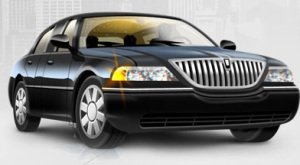Uber got some good news yesterday, as the Washington, D.C. city council voted to approve new transportation regulations that legitimize its service in the nation’s capital. While Uber argues that it has never operated illegally in any market, the ruling will go a long way toward ensuring that regulators can no longer seek to shut it down.
Uber’s victory there doesn’t just ensure its own feasibility in that market — it could also shut other competitors out. If you take a look at what the D.C. council proposes, what you find is that the regulatory framework is friendly to Uber, but not so much to potential competitors who could enter the market following Uber.
In Uber’s words, the D.C. law accomplishes the following things:
- It explicitly defines a separate class of for-hire vehicles, sedans, that operate through digital dispatch and charge by time and distance.
- It creates a single operator license for taxis, sedans and limousines and requires the D.C. Taxi Commission to actually issue licenses after a four-year hiatus.
- It sets new standards for price transparency that will benefit consumers.
- And, above all, it brings regulatory certainty to the vehicle-for-hire marketplace – making it very clear that Uber and its partners, the licensed/regulated sedan companies and drivers, can’t be regulated out of existence.
There are some interesting things to note about this proposal: First of all, it’s a clear victory for e-hail apps, which allow users to use GPS location to pinpoint their location and find a car or taxi nearby. But not all e-hail apps. Specifically, the new regulatory framework is for licensed drivers and operators only.
The new regulatory structure, which provides a single license for taxis, sedans, and limos in the District, will simplify things for Uber, and for other e-hail apps that are working with taxi companies, like Taxi Magic and Cabulous. But it could create headaches for new entrants, specifically ride-sharing services like SideCar and Lyft.
That regulatory certainty that Uber talks about? The new D.C. rules might not regulate licensed companies and drivers out of existence, but what about unlicensed drivers, like those who provide rides through Lyft and SideCar? The new rules provide no place for them to operate, unless they plan to get their drivers licensed in that market.
So far, that’s not a problem. After all, Lyft is currently San Francisco-only, and SideCar only recently expanded into its second market, Seattle. But one could imagine that, as these services grow, they’ll want to follow Uber by launching in various new markets around the country, or even internationally.
But look at what Uber has gone through as it has entered new markets, and the regulatory issues it has faced, and you can see the hurdles that these other services will have to clear as they expand. The difference, at least to Uber CEO Travis Kalanick, is that they’re not operating legally, while Uber has been. In his mind, it all comes down to licensing — and that’s the one place where the SideCars and Lyfts of the world are unlikely to match Uber.
The new rules in D.C. are important because they represent the first major change in a regulatory framework that’s been adopted by a major U.S. city in decades. “Regulators supporting innovation is encouraging,” as Lyft/Zimride co-founder John Zimmer wrote in an email this morning.
“As with any market, we’ll need to work collaboratively with regulators to support peer-to-peer ridesharing,” Zimmer acknowledged. Sure, the establishment of a new class of services is no joke, but those rules were written pretty much with Uber in mind. And after years and years of inertia, it seems unlikely that D.C. will soon revisit that new framework in a way that’s friendly to ridesharing.
The loss of Washington, D.C., as a possible new launch market might not seem like a huge problem for these fledgling services — after all, they’re trying to get the experience right in San Francisco before casting too wide a net in other cities. But Uber is hoping to use this win as a springboard for creating a new regulatory framework in other cities around the country, with the D.C. rules as a model. As Kalanick said during his press conference yesterday, “D.C. is leading the charge and setting the standard for how other cities should be thinking about this technology.”
If similar rules are adopted in other cities, innovation might prevail over regulatory incumbency — just not for the ride-sharing guys.
